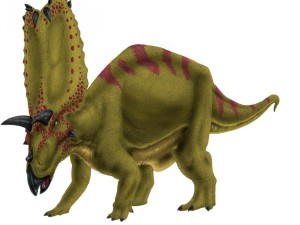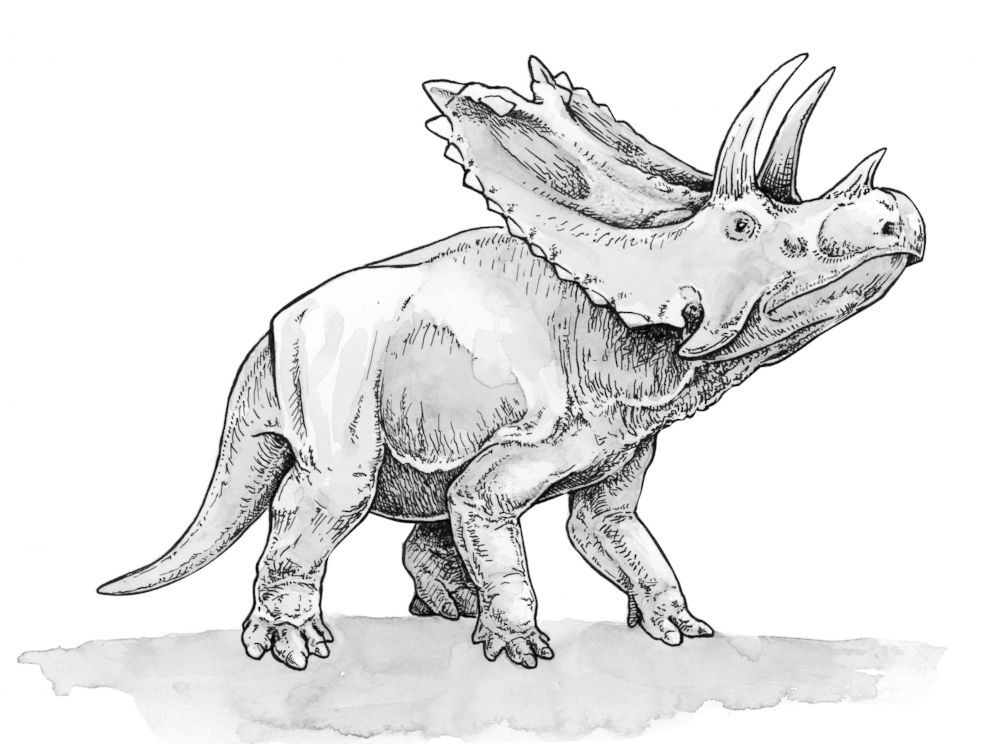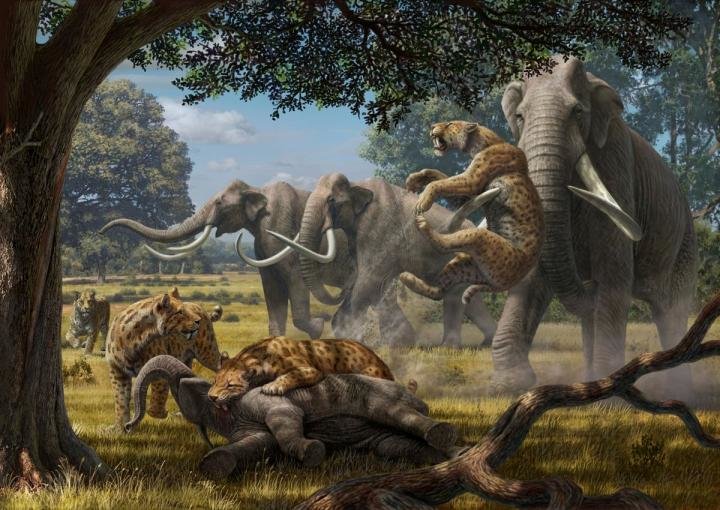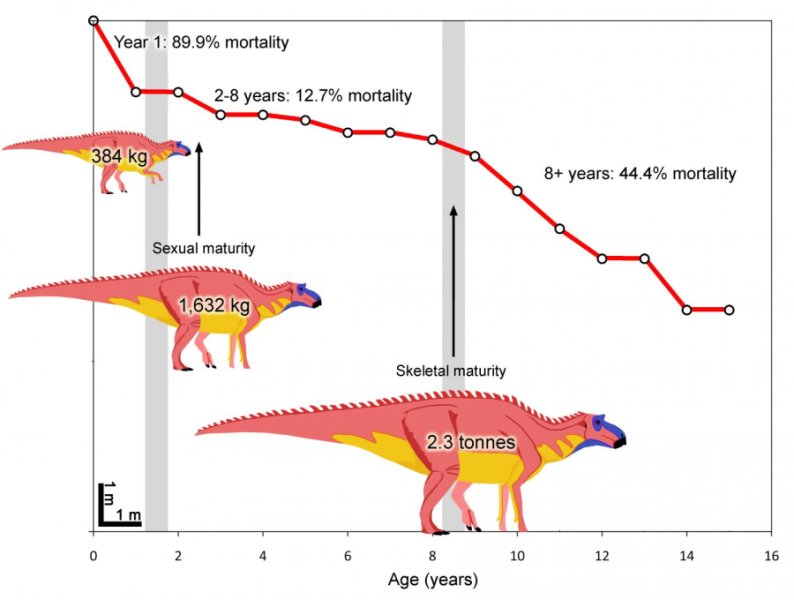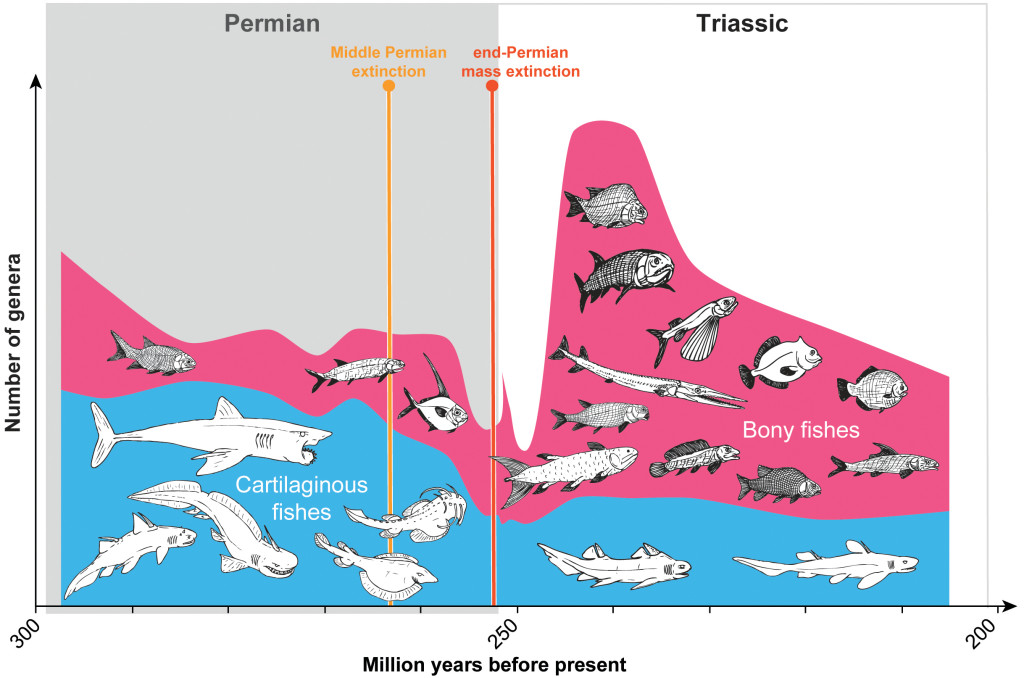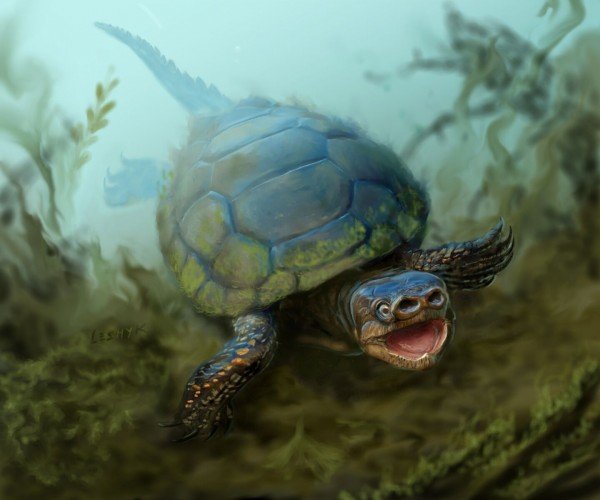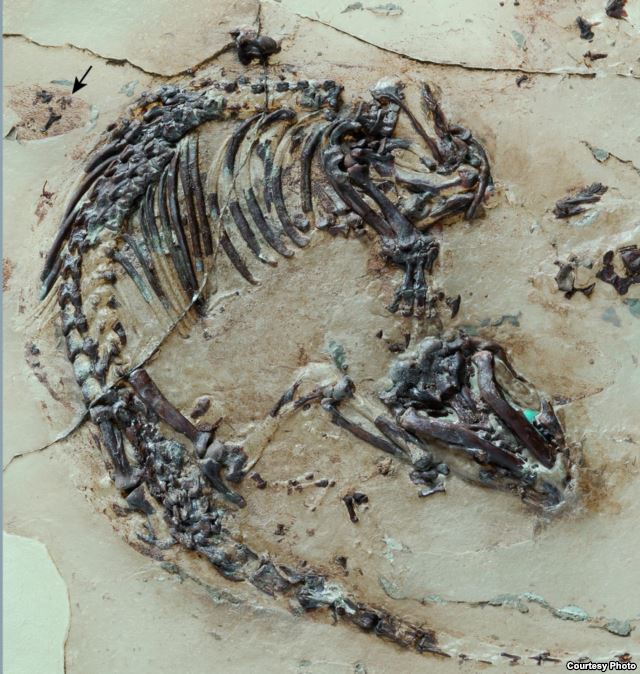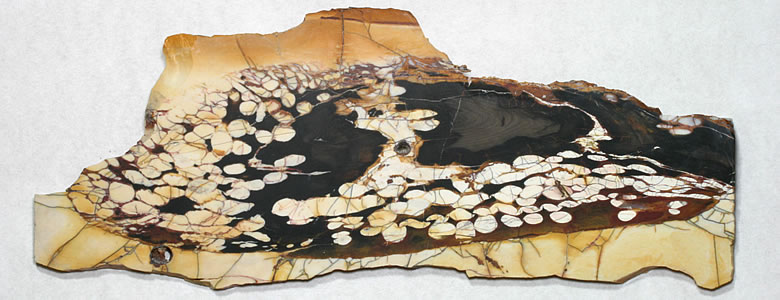A nasty little 66-million-year-old family secret has been leaked by a recently unearthed tyrannosaur bone. The bone has peculiar teeth marks that strongly suggest it was gnawed by another tyrannosaur. The find could be some of the best evidence yet that tyrannosaurs were not shy about eating their own kind.
“We were out in Wyoming digging up dinosaurs in the Lance Formation,” said paleontologist Matthew McLain of Loma Linda University in California. “Someone found a tyrannosaur bone that was broken at both ends. It was covered in grooves. They were very deep grooves.”
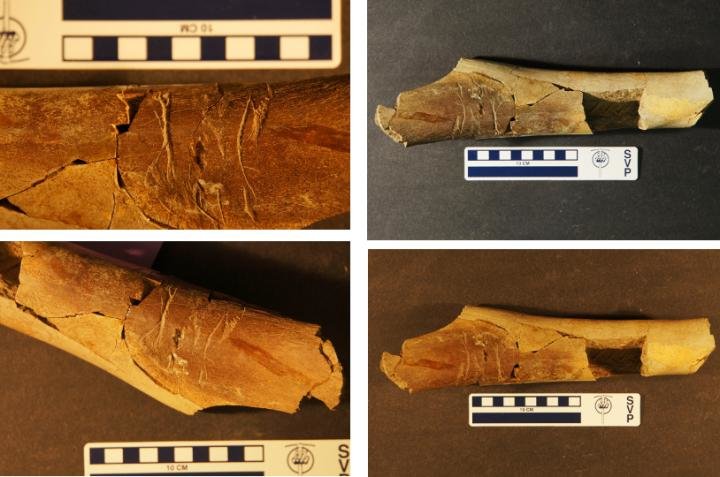
This is a recently unearthed tyrannosaur bone with peculiar teeth marks that strongly suggest it was gnawed by another tyrannosaur. Credit: Photos by Matthew McLain.
The grooves were clearly those of an animal pulling the flesh off the bone — pulling in a direction perpendicular to the bone, in the same way humans eat a piece of fried chicken. But one groove stood out. It was located at the larger end of the bone and contained smaller parallel grooves caused by the diner’s head turning, so that the serrated edges of its teeth dragged across the bone.
Serrated teeth rule out crocodiles and point directly to a theropod dinosaur like T. rex. The fact that the only large theropods found in the Lance Formation are two tyrannosaurs —Tyrannosaurus rex or Nanotyrannus lancensis — eliminates all interpretations but cannibalism, explained McLain, who will be presenting the discovery on 1 Nov. at the annual meeting of the Geological Society of America in Baltimore.
“This has to be a tyrannosaur,” said McLain. “There’s just nothing else that has such big teeth.”
The direction of the grooves is consistent with getting flesh from bones off an animal that was quite dead at the time. The bones don’t reveal whether the cannibal was scavenging or was also the killer of the tyrannosaur.
“Exactly who did the eating that day, in the Late Cretaceous, could still be sorted out by the same grooves,” McLain said.
The serration grooves are a valuable clue to the size of the animal who owned the teeth. Previous work using Komodo dragon teeth has demonstrated the relationship between serration sizes and the size of the animal. This approach has been used on tyrannosaurs, and McLain thinks it will work in this case, too.
“It only works if you know what species it is,” he said. “And since tyrannosauruses are the only large predators in these formations, it’s pretty straightforward.”
Even without knowing the size of the eater, it may be easy to say which species of tyrannosaur was eating, because, according to McLain, many paleontologists believe Nanotyrannus were really juvenile T. rex.
Citation:Geological Society of America. “It’s a Tyrannosaur-eat-Tyrannosaur world.” ScienceDaily. ScienceDaily, 29 October 2015. <www.sciencedaily.com/releases/2015/10/151029134652.htm>.
Key: WFS,Riffin T Sajeev,Russel T Sajeev, World Fossil Society













 November 3rd, 2015
November 3rd, 2015  Riffin
Riffin 
